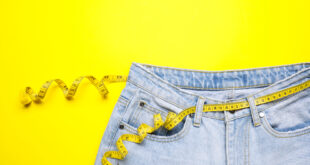 Did you know that the number of nutrients we need from our food actually increases as we grow older? In addition to needing to eat more protein from lean meats, fish, chicken, eggs, legumes (peas, beans and lentils), nuts and seeds, Vitamin D, calcium and folate, it is also important to ensure we are getting enough iron.
Did you know that the number of nutrients we need from our food actually increases as we grow older? In addition to needing to eat more protein from lean meats, fish, chicken, eggs, legumes (peas, beans and lentils), nuts and seeds, Vitamin D, calcium and folate, it is also important to ensure we are getting enough iron.
Why Iron is Important?
Iron is important as it works hand in hand with oxygen. Healthy blood cells use iron to transport oxygen around the body and maintain a healthy immune system. When your body doesn't get enough iron, you can get anaemic. Anaemia is also one of the red flags your body gives you to signal a more serious underlying disease or condition like arthritis, infection and cancer.
Fortunately there are many foods from which your body can obtain the iron it needs.
There are two kinds of iron in food – haem and non-haem. Haem iron is readily absorbed and is only found in meat, chicken and fish. Non-haem iron is evidently not absorbed as well by our bodies and is found in cereals, vegetables, legumes (lentils and beans etc), tofu, seeds, nuts and eggs.
The big issue with eating iron-rich foods is maximising your body's capacity to absorb the iron. One of the best ways to do this is to team up those iron-rich foods up with vegetables and fruits rich in Vitamin C. For example, drinking orange juice with your morning breakfast cereal or having a salad with capsicum in it to go with your steak dinner.
The NZ Nutrition Fundation also recommends combining foods rich in haem and non-haem iron to boost your body's ability to absorb the iron. Adding glean meat to a salad sandwich will increase the amount of iron absorbed from both the bread and salad.
Some prescribed medication can also zap your iron reserves. So unfortunately can drinking tea. The Foundation recommends waiting at least 30 minutes to an hour after you've eaten dinner before you stick the kettle on.










Join the Discussion
Type out your comment here:
You must be logged in to post a comment.